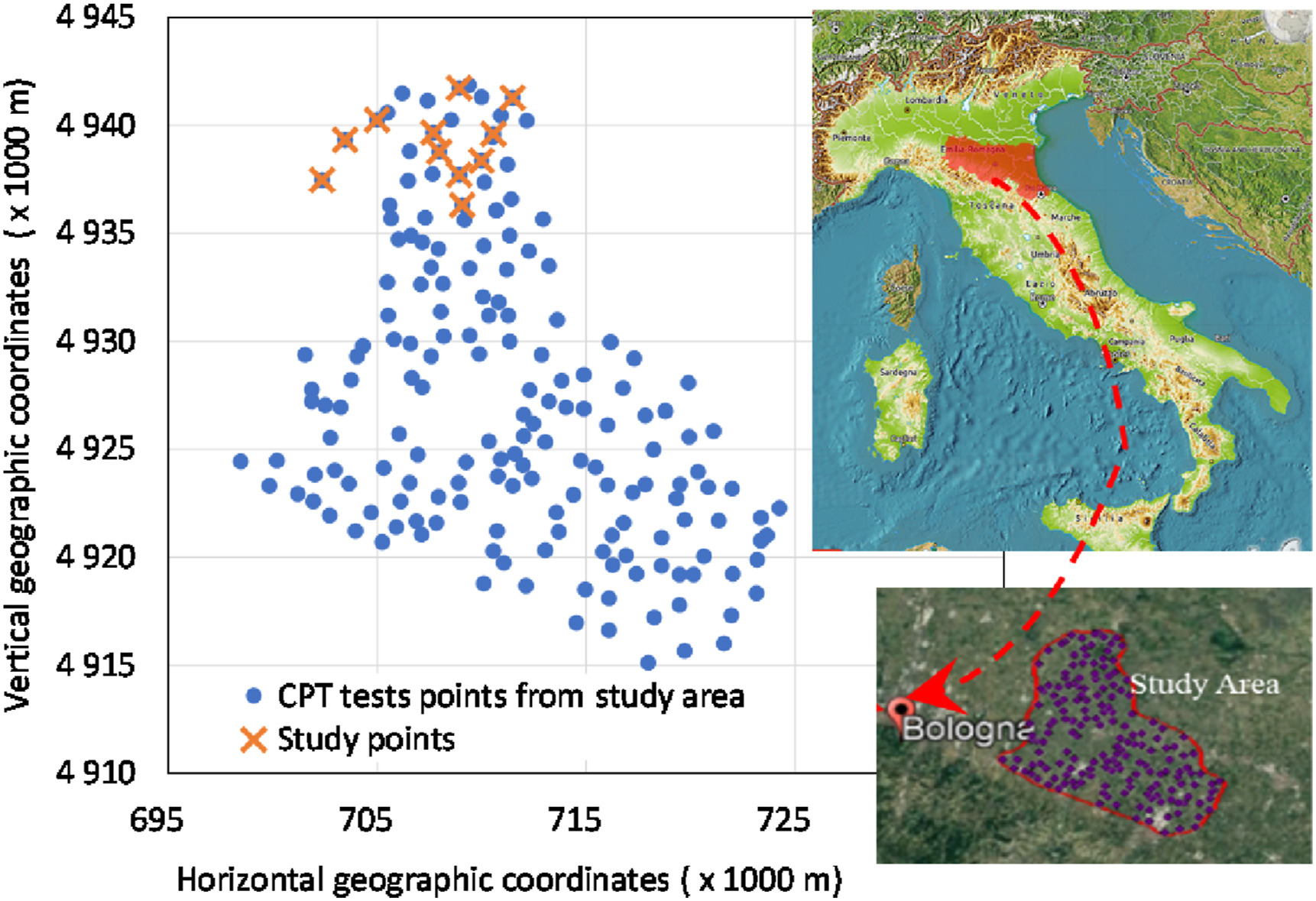JRMGE / Vol 14 / Issue 3
Spatially variable soils affecting geotechnical strip foundation design
Joanna Pieczyńska-Kozłowska, Giovanna Vessia
Show More
a Department of Civil Engineering, Wrocław University of Science and Technology, Wrocław, 50-370, Poland
b Department of Engineering and Geology, Università degli Studi G. d’Annunzio Chieti-Pescara, Chieti, 66100, Italy
2022, 14(3): 886-895. doi:10.1016/j.jrmge.2021.10.010
Received: 2021-06-28 / Revised: 2021-09-03 / Accepted: 2021-10-18 / Available online: 2021-12-27
2022, 14(3): 886-895.
doi:10.1016/j.jrmge.2021.10.010
Received: 2021-06-28
Revised: 2021-09-03
Accepted: 2021-10-18
Available online: 2021-12-27
Natural soil variability is a well-known issue in geotechnical design, although not frequently managed in practice. When subsoil must be characterized in terms of mechanical properties for infrastructure design, random finite element method (RFEM) can be effectively adopted for shallow foundation design to gain a twofold purpose: (1) understanding how much the bearing capacity is affected by the spatial variability structure of soils, and (2) optimisation of the foundation dimension (i.e. width B). The present study focuses on calculating the bearing capacity of shallow foundations by RFEM in terms of undrained and drained conditions. The spatial variability structure of soil is characterized by the autocorrelation function and the scale of fluctuation (δ). The latter has been derived by geostatistical tools such as the ordinary Kriging (OK) approach based on 182 cone penetration tests (CPTs) performed in the alluvial plain in Bologna Province, Italy. Results show that the increase of the B/δ ratio not only reduces the bearing capacity uncertainty but also increases its mean value under drained conditions. Conversely, under the undrained condition, the autocorrelation function strongly affects the mean values of bearing capacity. Therefore, the authors advise caution when selecting the autocorrelation function model for describing the soil spatial variability structure and point out that undrained conditions are more affected by soil variability compared to the drained ones.
Keywords: Bearing capacity, Shallow foundation, Random finite element method (RFEM), Ordinary kriging (OK), Soil property variability structure, Reliability-based design
Article Data
Author(s) Information
Joanna Pieczyńska-Kozłowska
✉️ joanna.pieczynska-kozlowska@pwr.edu.pl

Joanna Pieczyńska-Kozłowska obtained her MSc and PhD degrees in Civil Engineering from Wrocław University of Science and Technology (WUST), Poland. Her PhD thesis concerned the application of the random finite element method to estimate the bearing capacity of spread foundations over an anisotropic soil model. She is an assistant professor of Civil Engineering, Department of Geotechnology, Hydrotechnology, Underground and Hydro Engineering, WUST. Her research interests include developing and implementing soil spatial variability affected probabilistic methods in geotechnical engineering and reliability analysis. She has been involved in geomechanics research and teaching for more than 10 years. She has participated in research and didactic projects founded by WUST, Polish National Science Centre or European Union.

